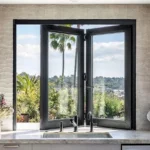The flat extension cord has now become one of the most popular choices in case you need to furnish a home, office or create a modern home.
Compared to the large size of conventional cables, flat cords take up less space against walls, fit under furniture, and minimize the chances of tripping.
However, while a smooth profile is a good asset, an extension cord is not just about appearance when selecting a flat extension cord. You must have one that is safe to operate, fits your layout perfectly and matches the needs of your device.
You may be considering a TV wall, workstation, or narrow hallway, but by familiarizing yourself with the key variables and their impact, such as gauge, rating, length, and certification, you will be able to select the most appropriate flat extension cord for your needs.
In the article ahead, you’ll find clear guidance on selecting a great flat extension cord for your needs.
See the bigger picture — related content that completes the story.
1. Understand Wire Gauge and Power Capacity
The wire gauge, or in short AWG (American Wire Gauge), is among the most essential considerations when choosing a flat extension cord. A smaller gauge number means a thicker wire that can safely carry more current.
According to the major retailers, the light equipment must be equipped with thinner gauges (e.g., 16 AWG), whereas heavier equipment should be equipped with heavier wire (14 AWG or 12 AWG).
It is especially important to check the gauge since flat extension cords are usually available in lower profiles. A well-manufactured flat extension cord must meet the same electrical standards as thicker round cords.
2. Location, Voltage Drop & Length

Length can affect performance and safety. The longer the flat extension cord, the more likely you are to experience a voltage drop, meaning your appliances may be underpowered, or the extension cord could become hot. Experts suggest that you should have the shortest viable length in your setup.
When setting up your cord, also consider where it will be placed. Flat extension cords are ideal for areas with limited space, such as behind furniture or along walls, but they must not be stretched too far or bent sharply. If your setup requires a longer reach or powers multiple high-demand devices, opt for a heavier gauge cord to handle the load safely. Proper placement, length, and gauge selection together ensure both safety and reliable power delivery in any environment.
3. Plug Type, Certification and Safety Features
Selecting a flat extension cord will also entail the verification of the plug type, grounding and safety certifications. The majority of flat cords carry 2 or 3-prong plugs; most grounded-plug devices will contain a three-prong cord. The third prong is used to prevent electrical shock by providing an electrically grounded path.
Make sure that the cord is lab certified (UL, CSA, etc.). Another safety measure around moisture areas is the provision of flat cords that have controlling surge protection or GFCI. Safety reviews stated that one should exercise caution before using them, as they may become dangerous if the right precautions are not taken.
4. Indoor/ Outdoor Use and Jacket Quality

Flat extension cords differ depending on their usage location and purpose.
In indoor applications, the shorter lengths and less rugged gauges could be used. In the case of outdoor, high-draw or heavy-intensity use, you will require cords that are more durable in the environment – UV certified, weather-proof jackets, heavier gauges, and stronger insulation.
When moving heavy furniture, under carpets, or in busy places, ensure the jacket is abrasion-resistant, does not spoil the insulation, and is not high profile. The flat design enables invisibility, yet requires meeting safety specifications.
5. Maintenance, Visibility and Future-Proofing

Only the flat design enables it to be installed under carpets, behind furniture or along the baseboard. This is good from an aesthetic standpoint, but it also implies that maintenance plays a significant role. Check the cord frequently to ensure there is no damage and that it is not concealed in a way that makes wear difficult to notice.
And one more: think ahead; there might be more devices in the future, as you add more devices or rearrange your workspace. It is better to purchase a flat extension cord larger than the one you need at the moment, allowing for flexibility. Some modular flat cords carry add-on outlets or surge protection.
Conclusion
Selection of an appropriate flat extension cord is a combination of layout, load and smarter design. Check the wire gauge and power ratings, select the appropriate length, ensure certification and correct plug type, match indoor/outdoor use, and leave space for future changes.
The right extension cord, chosen as a flat one, will not simply disappear behind the furniture; it will provide reliable, silent, and safe power over the next few years. In addition to convenience, it helps increase organization, reduce clutter, and minimize the risk of tripping.
When used carefully and chosen well, you will have a new, long-lasting, and dependable extension cord that will serve your system reliably, keeping your devices on and your space clean and safe.
Find what’s next — explore more articles waiting for you at Management Works Media.






